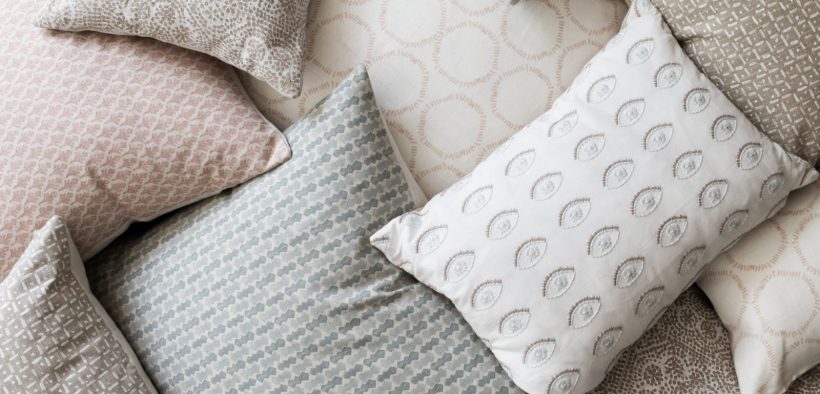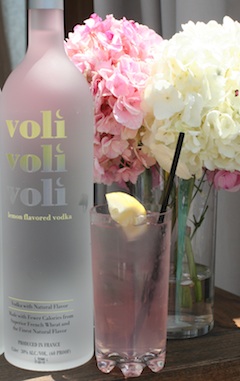The case for pillows in easy décor updates



Investment pieces, such as a sofa–loveseat combo, dining room set or a dramatic bedroom headboard anchor a room, just as a little black dress or an impeccably tailored suit anchors your wardrobe. In both cases, you’re spending the money on essential pieces will ideally last for years. On the other hand, as we all embrace the changes of season, carefully selected accents and accessories ensure we can always look fresh and current.
Change up the blouse, shoes or jewellery or add a scarf, and that suit will look new again. As the same idea should apply when updating the interiors of your home, throw pillows and cushion covers can stand in as the equivalent of jewellery or scarves, giving your room a whole new flavour in an almost effortless way. Or, as designer Lauren Meichtry (creator of the line Elsie Home) sees it, decorative enable you to express your personal style in a petite but potent package.
‘If you’re fond of a bold hue like red or yellow, start with a few vibrant throw pillows on a sofa or chair,’ suggests Elegant Strand owner Mark Lorberbaum (www.elegantstrand.com), who turns to designer Charlotte Dunagan, interior designer and founder of Dunagan Diverio Design Group, to put Elegant Strand’s chic pieces to good use.
According to Dunagan and Meichtry, correct pillow accenting is often a balancing act of calming colours and bold patterns. ‘Cushions often add the final layer, creating a comfortable and inviting atmosphere,’ says Dunagan, whose six decorative pillow collections feature zippered removable covers and a feather down insert, and 14 × 24 in, 20 × 20 in, 22 × 22 in, and 24 × 24 in sizes. ‘Pillows can so easily be changed up for a new look, whether seasonally or just to add some new colours and textures to a room. On the other hand, it’s important to acknowledge that working throw pillows into a room’s design is more difficult than it looks.’
While the bedroom is a natural place to start when adding pillows, Meichtry recommends sticking with two or three pillow sizes. Larger pillows (24- or 22-inch square) create the illusion of height, and should be placed toward the back of an arrangement with smaller pillows filling the look in. She likens a small lumbar pillow to the cherry on top of your ‘bed sundae’. In a family room or living room, she encourages people not to forget that sofas are made for sitting. Too many pillows can make those using the sofa feel uncomfortable.
‘While we all have different design preferences, comfort is typically top-of-mind for many of us, so start with two to three in the corners and go from there,’ says Meichtry, whose upcoming fall collection will feature two wool pillows inspired by nomadic Mongolian cultures. ‘I love incorporating textiles with a rich history.’
Even with so many designs, textures and sizes to choose from, both designers offer pro tips on selecting the right the “soft wares” that will make your surroundings pop.
Room for improvement. The shape and size of the decorative pillows you choose depends on the depth of the furniture piece and of course the style even more so than the room’s size. Larger, deeper furnishings can easily feature decorative pillows as opposed to narrow furnishings. However, if you add too many pillows, it becomes hard to manage. Dunagan advises three or four pillows maximum for a bedroom, while the number of pillows in a living room depends on how deep or narrow the sofas and chairs are. Meichtry, meanwhile, says that too many pillows on a sofa or bed means less space to relax and enjoy one’s surroundings.
Colours and patterns imbue strength and personality as well as seasonality to your space. The best canvas on which to build a mosaic of pillows are furnishings or backdrops with neutral colour palettes. From there, you can select pillows or pillow covers to further define a room’s look based on the season’s palates or global cultures that truly speak to you. Meichtry is inspired by printmaking and weaving techniques from different cultures from around the world. Dunagan likes to add pops of earthy or jewel-toned colour, patterns, textures and luxe fabrics to spice up a room during cooler months.
Simply stated. The “simpler is better” rule applies here, and both designers say that most common mistake non-designers make in working with pillows is using the wrong sized cushions in proportion to the chair or sofa. As mixing patterns and colours can also be difficult for non-professionals, the designers recommend selecting designs that are in the same colour family.















